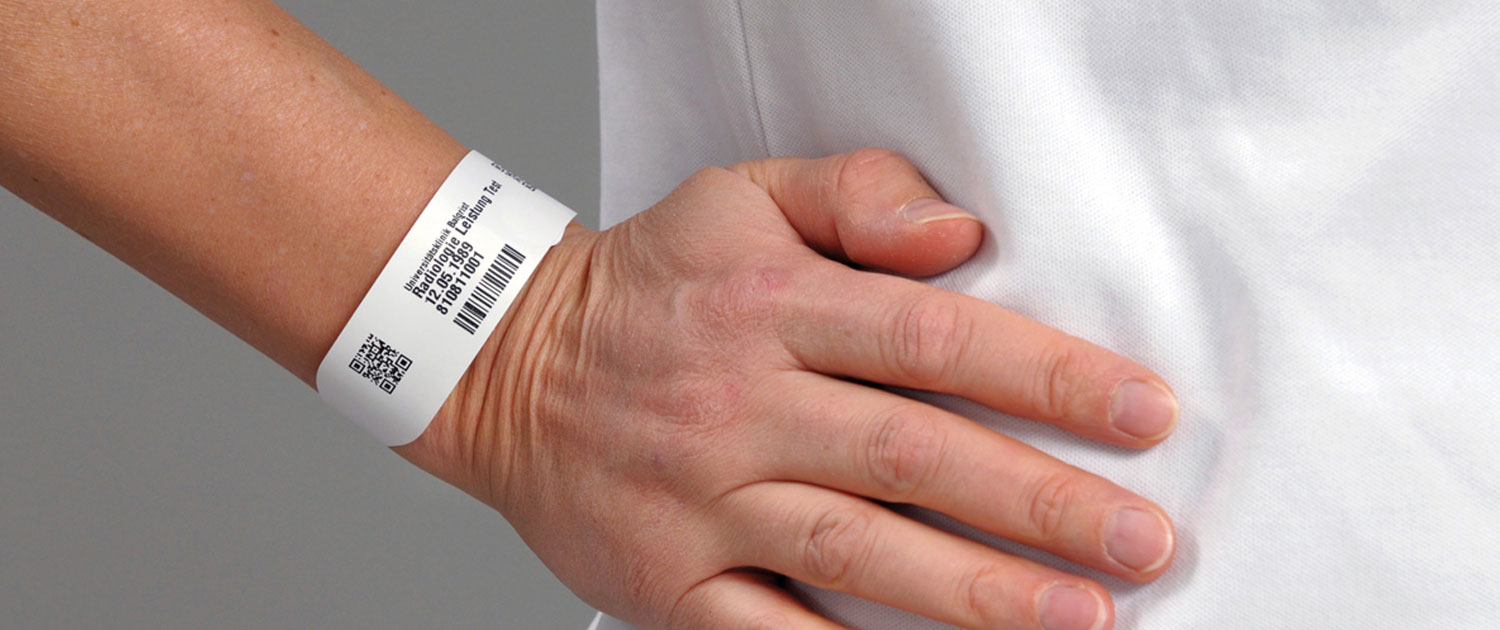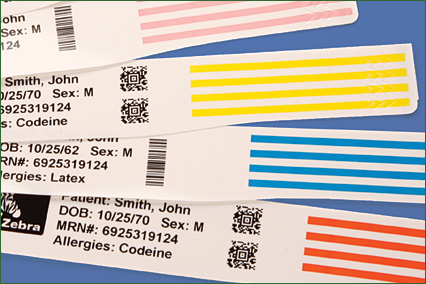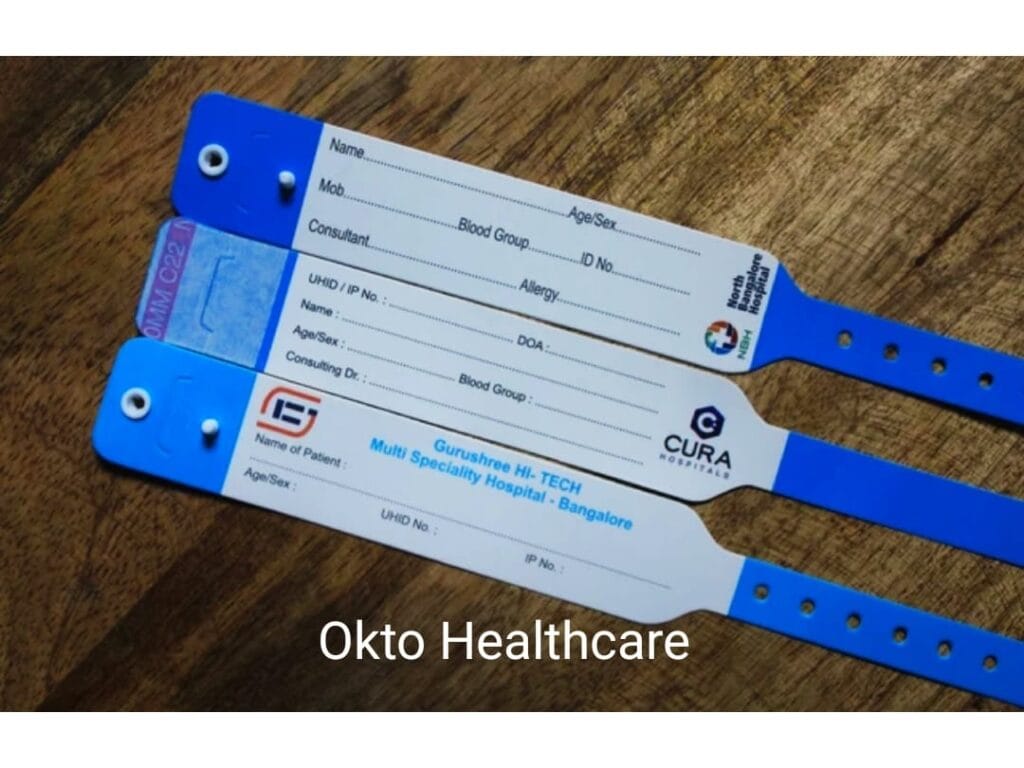Why Every Hospital Must Apply Patient Identification Band for Its Patients
Why Every Hospital Must Apply Patient Identification Band for Its Patients
Blog Article
Enhancing Person Care With Effective Recognition Bands
The execution of reliable identification bands is a critical aspect in boosting client care within healthcare settings. These bands not just serve to reduce the threats related to client misidentification but additionally enhance communication among clinical employees, thereby promoting a more secure atmosphere. Various kinds of identification bands accommodate specific needs, from resilient wristbands for adults to specialized bands for infants and important cases. As the landscape of individual identification progresses, one need to think about the effects of these systems on general medical care delivery and patient outcomes. What developments wait for in this critical location?
Value of Patient Identification
Making sure precise individual identification is important in medical care settings, as it straight impacts the safety and high quality of treatment given. Misidentification can lead to major errors, including providing the incorrect medication, executing wrong treatments, or miscommunicating essential individual details. Such errors not only jeopardize patient safety and security yet can also lead to legal implications and decreased count on medical care systems.
Efficient patient identification is fundamental to developing a secure environment where clients receive tailored and ideal treatment. It facilitates the accurate paperwork of case histories, allergies, and therapy plans, guaranteeing that doctor have accessibility to necessary details in any way times. In addition, durable recognition procedures aid simplify communication among medical personnel, enhancing cooperation and minimizing the risk of errors.

Kinds of Identification Bands
Identification bands play an essential duty in maintaining exact patient documents and boosting safety within health care atmospheres. Different types of recognition bands are utilized to deal with the specific needs and demands of various patient populations.

An additional type is the ankle joint band, which is especially valuable for newborns and infants, making sure that identification stays undamaged even during care procedures. Specialized bands, such as those for allergic reaction alerts or fall threat signs, supply additional layers of safety by drawing prompt interest to crucial person conditions.
Lately, digital identification bands have gotten popularity, incorporating barcodes or RFID technology that can be scanned to quickly fetch individual information. These bands enhance workflows and decrease the risk of human error throughout person identification procedures.
Benefits of Efficient Identification
Efficient identification of patients with using identification bands adds dramatically to overall individual security and care high quality. By guaranteeing that each individual is properly determined, doctor can effectively match clinical therapies and treatments to the proper person, reducing the danger of mistakes. This is specifically crucial in settings check my site with high individual turnover, where the possibility for misidentification is higher.
Additionally, efficient recognition bands improve interaction amongst healthcare groups. Accurate and clear person recognition cultivates partnership and ensures that all team members know a patient's specific requirements and case history. This communication is vital for providing coordinated treatment, specifically in emergency situation circumstances where time is important.

Eventually, effective identification through using recognition bands not just safeguards people however additionally promotes a society of security within healthcare centers (Patient Identification Band). By prioritizing accurate recognition, health care companies can boost outcomes and improve the general person experience
Carrying Out Recognition Solutions
While the relevance of individual identification is well acknowledged, the implementation of robust identification systems presents a complicated challenge for health care organizations. Establishing efficient identification systems calls for an extensive method, encompassing innovation, employees training, and procedure assimilation.
First, companies need to choose appropriate recognition technologies, such as barcode scanning, RFID, or biometric systems. Patient Identification Band. These technologies should be reviewed based on cost, functionality, and compatibility with existing facilities. A pilot program can help recognize prospective concerns before major application
Following, comprehensive training for staff is necessary. All personnel must recognize the relevance of exact client recognition and excel in making use of the picked technologies. Normal training updates and evaluations can enhance best methods and make certain continued conformity.
Furthermore, healthcare organizations ought to create standard treatments for person recognition throughout all divisions, reducing disparities and boosting interaction. Routine audits can help identify voids in adherence to these protocols.

Eventually, an efficient implementation of recognition systems not just boosts patient security but likewise cultivates a society of responsibility and persistance within medical care settings, ensuring constant and trustworthy client treatment.
Future Trends in Person Identification
Innovations in technology are set to change client recognition techniques in healthcare setups. The integration of biometric recognition methods, such as fingerprinting and face recognition, is anticipated to Find Out More improve precision and safety and security. These innovations can dramatically lower the risk of misidentification, making certain that clients get the appropriate treatments and drugs.
Moreover, the implementation of blockchain technology for individual records is gaining grip. This decentralized strategy can provide a secure and tamper-proof approach for managing individual identifications, therefore simplifying accessibility to vital details across different healthcare service providers.
Another fad is the boosting usage of mobile health and wellness applications that take advantage of QR codes for patient identification. These applications permit for real-time updates and easy accessibility to patient information, encouraging health care experts to make informed choices swiftly.
In addition, expert system (AI) is positioned to play a key role in evaluating person recognition information, recognizing patterns, and predicting possible identification errors prior to they take place.
As these innovations advance, they promise not only to improve patient safety and security but also to improve the total efficiency of health care distribution systems. Embracing these advancements will certainly be important for future-proofing individual treatment practices.
Conclusion
In conclusion, efficient recognition bands are important for improving individual safety and care high quality within health care setups. By lessening the risks related to misidentification, these bands assist in accurate and prompt information retrieval, inevitably boosting interaction amongst health care suppliers. The application of robust identification systems not just fosters a culture of security yet additionally positions healthcare establishments to adjust to future patterns in patient recognition technology, making sure optimal end results for patients in varied clinical settings.
As the landscape of client recognition progresses, one must take into consideration the effects of these systems on overall health care delivery and individual outcomes.Efficient individual recognition is basic to developing a safe environment where individuals receive appropriate and personalized treatment. Inevitably, focusing on effective individual recognition strategies not only cultivates a culture of security however additionally contributes to boosted individual results and overall satisfaction with healthcare solutions.
Effective recognition of people via the use of recognition bands contributes dramatically to total client safety and care high quality. The application of robust identification systems not just cultivates a culture of safety and security yet likewise placements health care organizations to adapt to future patterns in patient identification innovation, guaranteeing optimal outcomes for people in varied medical environments.
Report this page